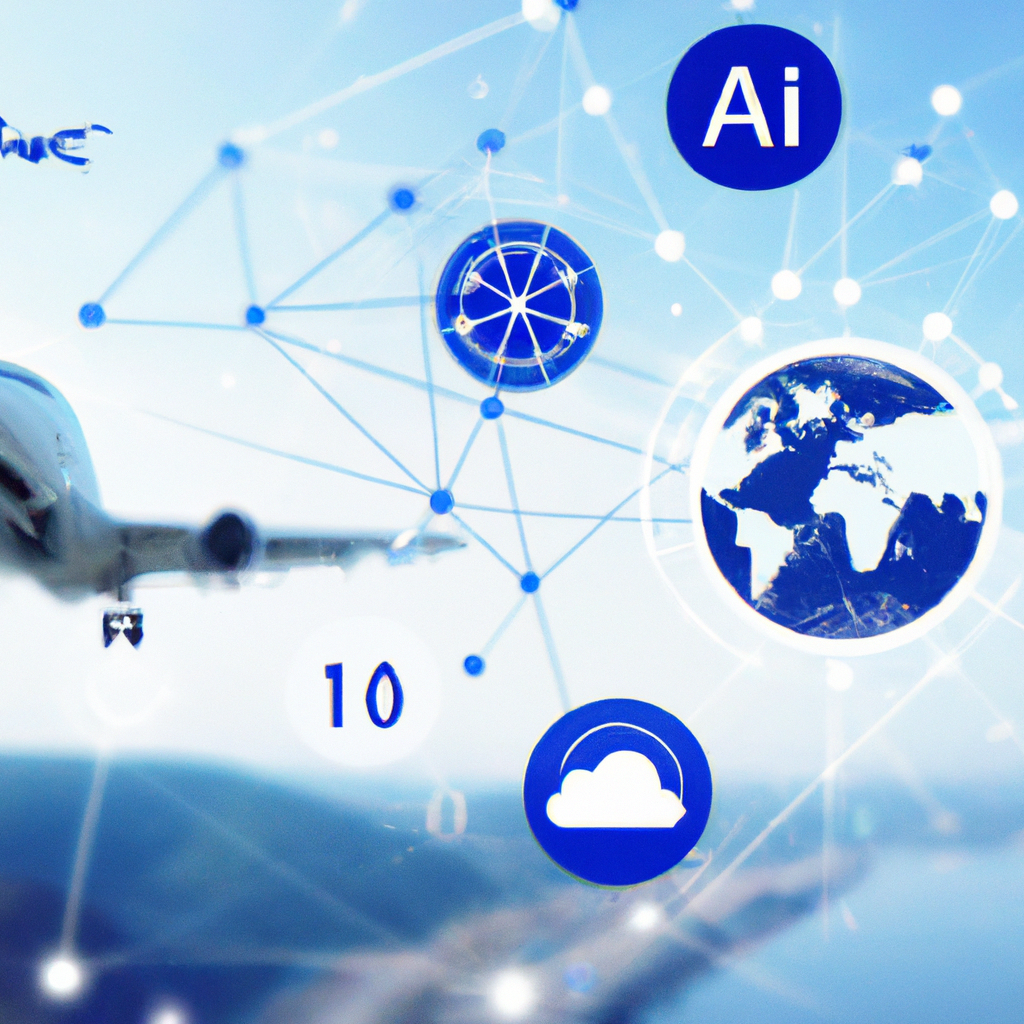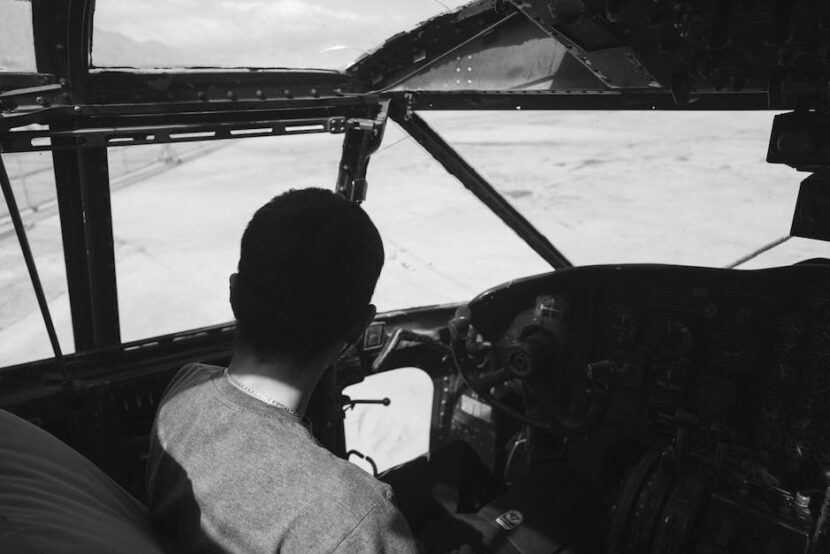-
Table of Contents
- Introduction
- How AI is Revolutionizing Air Traffic Control and Enhancing Safety in Aviation
- Exploring the Benefits of Autonomous Aircraft and Autopilot Systems
- The Impact of AI on Aircraft Maintenance and Repair
- Utilizing AI to Improve Flight Planning and Scheduling
- Examining the Potential of AI-Powered Air Traffic Management Systems
- Conclusion
with AI.
Introduction
The aviation industry is constantly evolving and adapting to the changing needs of passengers and the environment. Artificial Intelligence (AI) is playing an increasingly important role in the aviation industry, providing new opportunities to enhance safety and efficiency in air travel. AI can be used to automate processes, improve decision-making, and reduce human error. AI can also be used to analyze data from sensors and other sources to detect potential problems before they occur. AI can also be used to optimize flight paths, reduce fuel consumption, and improve the overall efficiency of air travel. AI is revolutionizing the aviation industry, and its potential to improve safety and efficiency is only beginning to be realized.
How AI is Revolutionizing Air Traffic Control and Enhancing Safety in Aviation
The aviation industry is undergoing a revolution with the introduction of artificial intelligence (AI) into air traffic control (ATC). AI is transforming the way air traffic controllers manage the skies, making air travel safer and more efficient.
AI is being used to automate many of the tasks that air traffic controllers used to do manually. This includes tracking aircraft, monitoring weather conditions, and providing real-time updates to pilots. AI can also detect potential conflicts between aircraft and alert controllers to take action. This helps reduce the risk of mid-air collisions and other safety hazards.
AI is also being used to improve the accuracy of flight plans. AI-powered systems can analyze data from multiple sources to create more accurate flight plans. This helps reduce delays and improves the overall efficiency of air travel.
AI is also being used to improve communication between air traffic controllers and pilots. AI-powered systems can provide real-time updates to pilots, allowing them to make better decisions in the air. This helps reduce the risk of accidents and improves the overall safety of air travel.
The use of AI in air traffic control is revolutionizing the aviation industry and making air travel safer and more efficient. AI-powered systems are helping to reduce the risk of accidents and improve the overall efficiency of air travel. As AI technology continues to evolve, it will continue to revolutionize the aviation industry and make air travel even safer and more efficient.
Exploring the Benefits of Autonomous Aircraft and Autopilot Systems
Autonomous aircraft and autopilot systems are revolutionizing the way we fly. These technologies are making air travel safer, more efficient, and more cost-effective. In this article, we’ll explore the benefits of autonomous aircraft and autopilot systems and how they are changing the aviation industry.
One of the most significant benefits of autonomous aircraft and autopilot systems is improved safety. Autopilot systems can take over the majority of the flight operations, allowing pilots to focus on other tasks. This reduces the risk of human error and increases the overall safety of the flight. Autonomous aircraft can also detect and avoid potential hazards, such as other aircraft or bad weather. This helps to reduce the risk of accidents and incidents.
Autonomous aircraft and autopilot systems also make air travel more efficient. Autopilot systems can be programmed to fly the most efficient route, reducing fuel consumption and saving time. Autonomous aircraft can also be programmed to fly in formation, which reduces drag and increases fuel efficiency. This makes air travel more cost-effective and helps airlines save money.
Finally, autonomous aircraft and autopilot systems are making air travel more accessible. Autopilot systems can be used to fly smaller aircraft, such as drones, which can be used for a variety of purposes, including search and rescue operations, surveillance, and package delivery. Autonomous aircraft can also be used to fly in remote areas, such as the Arctic, where there are no airports or air traffic control. This makes air travel more accessible to people in remote areas.
In conclusion, autonomous aircraft and autopilot systems are revolutionizing the way we fly. These technologies are making air travel safer, more efficient, and more cost-effective. They are also making air travel more accessible to people in remote areas. As these technologies continue to develop, we can expect to see even more benefits in the future.
The Impact of AI on Aircraft Maintenance and Repair
The impact of artificial intelligence (AI) on aircraft maintenance and repair is undeniable. AI is revolutionizing the way aircraft maintenance and repair is conducted, making it more efficient, cost-effective, and safe.
AI is being used to automate many of the mundane tasks associated with aircraft maintenance and repair. This includes tasks such as data entry, scheduling, and tracking. AI can also be used to analyze data from sensors and other sources to detect potential problems before they become serious. This can help reduce the amount of time and money spent on repairs and maintenance.
AI can also be used to automate the inspection process. AI-powered robots can be used to inspect aircraft components, reducing the need for manual inspections. This can help reduce the amount of time and money spent on inspections and repairs.
AI can also be used to improve the accuracy of maintenance and repair. AI-powered systems can be used to detect and diagnose problems more quickly and accurately than manual inspections. This can help reduce the amount of time and money spent on repairs and maintenance.
Finally, AI can be used to improve safety. AI-powered systems can be used to detect potential safety issues before they become serious. This can help reduce the risk of accidents and improve the overall safety of aircraft.
Overall, the impact of AI on aircraft maintenance and repair is undeniable. AI is revolutionizing the way aircraft maintenance and repair is conducted, making it more efficient, cost-effective, and safe.
Utilizing AI to Improve Flight Planning and Scheduling
Flight planning and scheduling is an essential part of the aviation industry. It involves a complex process of analyzing data, making decisions, and coordinating resources to ensure that flights are safe, efficient, and cost-effective. In recent years, artificial intelligence (AI) has been used to improve this process.
AI can be used to analyze large amounts of data quickly and accurately. This data can include weather forecasts, flight paths, and aircraft performance. AI can also be used to identify patterns in the data and make predictions about future flight plans. This can help airlines make better decisions about when and where to fly, as well as how to optimize their routes.
AI can also be used to automate the scheduling process. AI-powered algorithms can be used to generate flight schedules that are optimized for cost, safety, and efficiency. This can help airlines save time and money by reducing the amount of manual work required to create flight plans.
Finally, AI can be used to monitor flights in real-time. AI-powered systems can detect anomalies in flight data and alert pilots and air traffic controllers of potential problems. This can help ensure that flights are safe and efficient.
AI is revolutionizing the way airlines plan and schedule flights. By leveraging the power of AI, airlines can save time and money while ensuring that their flights are safe and efficient.
Examining the Potential of AI-Powered Air Traffic Management Systems
As the aviation industry continues to grow, air traffic management systems are becoming increasingly important. With the introduction of artificial intelligence (AI) into the mix, the potential for these systems to become even more efficient and effective is immense. In this article, we’ll take a look at the potential of AI-powered air traffic management systems and how they could revolutionize the way we manage air traffic.
First, let’s consider the current state of air traffic management. Air traffic controllers are responsible for ensuring the safe and efficient flow of aircraft in the sky. This is a complex and challenging task, as they must monitor and coordinate the movements of multiple aircraft at once. AI-powered systems could help to streamline this process by providing controllers with real-time data and insights into the movements of aircraft. This could help them to make more informed decisions and reduce the risk of collisions or other safety issues.
Another potential benefit of AI-powered air traffic management systems is the ability to automate certain tasks. For example, AI could be used to automatically detect and alert controllers to potential conflicts between aircraft. This could help to reduce the workload of controllers and free up their time to focus on more complex tasks.
Finally, AI-powered systems could also help to reduce delays and improve the overall efficiency of air traffic management. By providing controllers with real-time data and insights, AI could help them to make more informed decisions and reduce the amount of time aircraft spend waiting in the sky. This could help to reduce delays and improve the overall efficiency of air traffic management.
Overall, the potential of AI-powered air traffic management systems is immense. By providing controllers with real-time data and insights, AI could help to streamline the process and reduce the risk of collisions or other safety issues. Additionally, AI could help to automate certain tasks and reduce delays, improving the overall efficiency of air traffic management. With the right implementation, AI-powered systems could revolutionize the way we manage air traffic.
Conclusion
In conclusion, AI and aviation have the potential to revolutionize air travel by enhancing safety and efficiency. AI can be used to automate mundane tasks, reduce human error, and improve the accuracy of data analysis. AI can also be used to improve the efficiency of air traffic control, reduce delays, and improve the overall experience of air travel. AI is already being used in many aspects of aviation, and its potential to improve safety and efficiency is only beginning to be realized. With continued research and development, AI and aviation will continue to revolutionize air travel and make it safer and more efficient for everyone.





